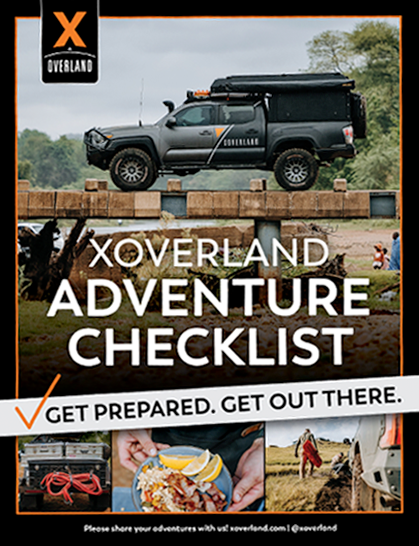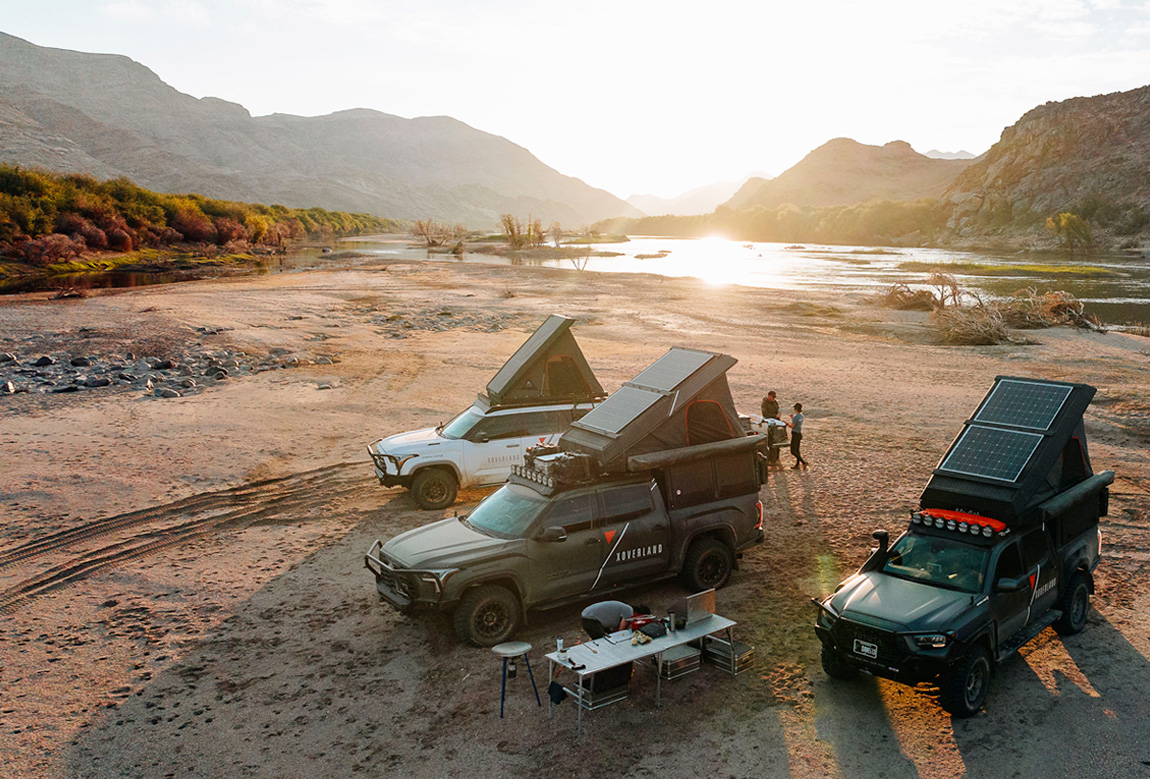EP13 | Search and Rescue for Overlanding & Travel | What You Need To Know
Featuring:
Episode Description
What happens, exactly, when you push the S.O.S. button on your satellite communication device? Find out the answer to that question and others pertaining to the subject of Search and Rescue (S.A.R.) from Clay Croft and fellow S.A.R. team member, Matt Hopkins. The two sit down with host, Jimmy Lewis, to discuss all things Search and Rescue and, in particular, how Search and Rescue looks for overlanders.
Along with being the co-founder of Expedition Overland, Clay has served on his local S.A.R. team for over 15 years. His experience as an active S.A.R. team member combined with his nearly two decades of overlanding make his insight extremely valuable for anyone interested in knowing how to manage the wide variety of situations you may encounter as an overlander that may lead or relate to Search and Rescue efforts.
This episode is brought to you by OnX Offroad!
Use the most trusted off-roading app, onX Offroad, to discover nearby trails, plan and track your trips, and get home safely. Get 20% off your subscription with code ‘XOVERLAND’ or by clicking here.
Detailed Episode Summary
Part 1 (1:10-6:40) Intro/What is Search and Rescue (S.A.R.)? Clay and Matt share their roles, specific expertise, and background with the Gallatin County Search and Rescue.
Part 2 (6:45-10:00) Search and Rescue Equipment and Gear: The trio discuss approaches to utilizing gear and equipment, both government and privately owned, by S.A.R. teams and the efficacy of X Overland trucks as S.A.R. tools.
Part 3 (10:15-13:15) Different Demographics? Different Environments? Different S.A.R. Teams and Approaches: Matt and Clay explain the vast differences among S.A.R. team needs in varying geographic areas with differing populations, looking at how the differences of these regions affect S.A.R. efforts and approaches.
Part 4 (13:20-18:55) New Technology and Search and Rescue: Learn how new technologies like phones, satellite devices, GPS, and navigation apps are keeping people safer and reducing search calls. Clay, Matt, and Jimmy discuss best practices for using these devices to prevent getting lost. The concept of “Self-Rescue” is explained.
Part 5 (19:00-20:40) The Potential Downsides of Technology and Search and Rescue: With all the new technology available to prevent us from getting lost, are there any downsides to it? Clay, Matt, and Jimmy discuss the potential pitfalls of an overreliance on technology for navigating in the backcountry. How do you find your way when the tech fails?
Part 6 (20:40-25:30) What Happens When We’re Lost? What can we do about it? Clay and Matt discuss the physiological, psychological, and emotional aspects of being “lost” and share strategies to recover your senses in that situation, find your place again, or improve your odds at being found.
Part 7 (25:30-28:50) What are the Alternatives to Using S.O.S. Button? Are there alternatives to using the S.O.S. button to call in a S.A.R. team? Matt, Clay, and Jimmy discuss how to optimize your use of technology and how to work with friends and family to both improve your odds of being successfully rescued in the case of an emergency and to prevent needing outside 3rd party help if your situation is not life-threatening.
Part 8 (28:50-32:35) What Happens When You Hit the S.O.S. Button? What does a Search and Rescue Effort Look Like? Matt and Clay share precise details of what it looks like when you hit the S.O.S. button. Where the ping goes, who gets notified, how local S.A.R. teams are assembled, and more are explained in this segment of the podcast.
Part 9 (32:40-36:00) Where Should You Keep Your Satellite Communication Device? Matt, Clay, and Jimmy discuss best practices for where to keep your satellite communication device. Problems with accidental signaling, and issues related to different recreational disciplines are discussed at length. Best practices for satellite communication device placement and usage for skiers, climbers, motorcyclists, bicyclists and others are shared.
Part 10 (36:05-40:00) Troubleshooting Problems with Satellite Communication Devices: Do you need a clear view of the sky for your satellite communication device to work properly? How should the antenna be positioned to optimize the capabilities of the device? What can you do if your satellite communication device is not working properly? The answers to these questions are found here along with approaches to practicing with your device.
Part 11 (40:00-40:30) What Happens When Someone has to Reach You when You’re Off-the-Grid? It is common to think of using technology to reach others when we’re in a state of crisis in the backcountry, but what if someone at home needs to reach you because there is a crisis there? This point is made and Clay, Matt, and Jimmy share approaches and techniques to make this aspect of working with technology in the backcountry possible.
Part 12 (40:30-48:35) How Does Search and Rescue Work While Overlanding Abroad? In Less Developed Countries? It is one thing to push your S.O.S. button in Gallatin County Montana; it is quite another to do the same thing in Baja Mexico, Madagascar, Bolivia, or the like. What are those differences, exactly? What can you expect in the way of search and rescue when overlanding abroad? Both Matt and Clay have vast experience traveling in these areas and much useful information to share on this topic.
Part 13 (48:40-54:00) What Can Overlanders Do to Self-Rescue? If you plan on overlanding in less developed countries, it may prove very useful to learn how to conduct your own self-rescue. As an overlander, what are the skills and tools necessary to self-rescue in remote areas? Clay and Matt share approaches to learning how to do this effectively.
Part 14 (54:00-54:50) Be Prepared to Wait for Your Search and Rescue: As overlanders, our vehicle can be a tremendous asset if we’re in need of a search and rescue. Clay, Matt, and Jimmy discuss how to ensure this is the case and also what you need to survive while awaiting the arrival of a Search and Rescue team.
Part 15 (54:55-105:15) How to Communicate with Search and Rescue Teams: What are the best practices for communicating with search and rescue teams? Are HAM radios (and radios in general) useful for communicating during search and rescue efforts? What is the value of a satellite phone and what is best practice for using it?
Part 16 (105:20-End) Final Thoughts and Pro Tips from Matt and Clay: Matt and Clay share some final tips and bits of information on how best to prepare for search and rescue and on how to avoid needing search and rescue in the first place.
Helpful Resources:
Learn about Satellite/GPS Communications and Tracking Devices here:
Blog
Proven Series Instructional Video
Learn about HAM radios and all things communication here!
Blog
Proven Series Instructional Video
If you’re enjoying the X Overland Podcast, please subscribe and take a moment to rate and review us!
Sign up for our X Overland newsletter to receive updates on our podcast releases and on everything Expedition Overland!
Listen to our other podcasts
-
- Andy2023-09-20T11:34:27-06:00
Share This Story, Choose Your Platform!



